I’m often fascinated by the stretch of highway halfway between Los Angeles and Mammoth Lakes Basin. Going north, it starts as a nondescript drive through miles of arid desert before the majestic peaks of the Eastern Sierra Nevada come into view. And it’s here, on a random turn-off from the highway, where one of the most seismically active regions in the country resides.
The Coso Volcanic Field is well known to drivers along Highway 395, even if they don’t realize they’re driving past it. Its most visible landmark, a dramatic maroon cinder cone dubbed Red Hill, can clearly be seen from the road.
As a highly active geothermal area, Coso is no stranger to earthquake swarms — strings of tremors that can strike in the hundreds in as little as a few days. The volcanic field is also home to basaltic lava flows, obsidian flows, rhyolite domes, cinder cones, geysers, and fumaroles (steam-emitting openings in the earth’s crust), most of which lie within the Naval Air Weapons Station China Lake. Access is restricted to passersby but one can walk right up to Red Hill, one of the youngest mountains in the state.
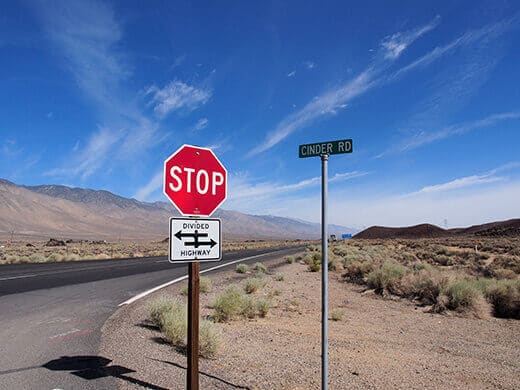
Turning off Cinder Road, we drove across a beautiful lava flow and right along the edge of an ancient lake bed. Its sun-baked crust looked like a mosaic of tiles.

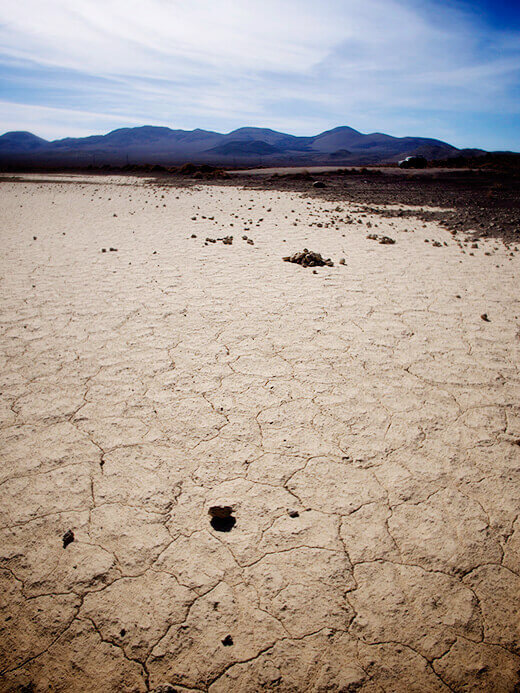
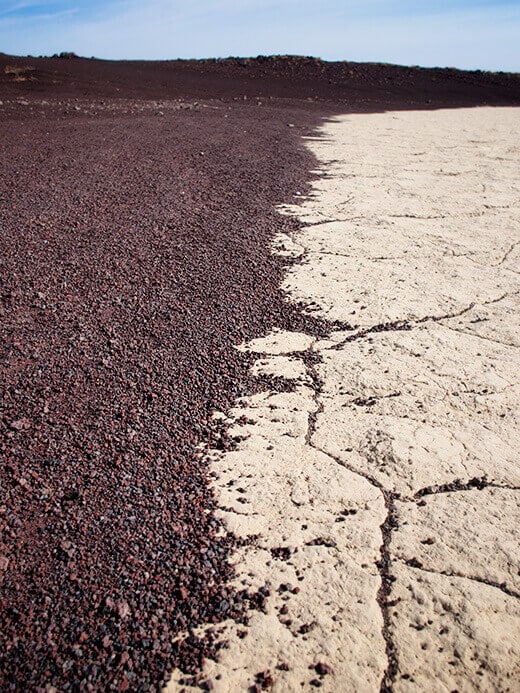
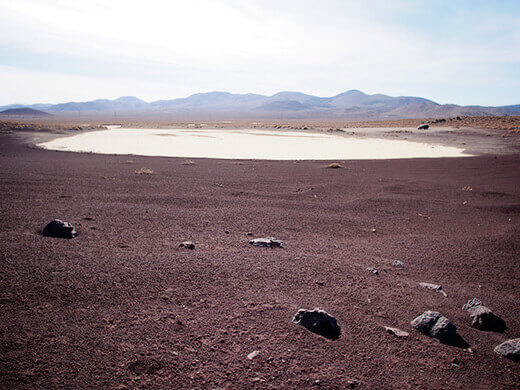
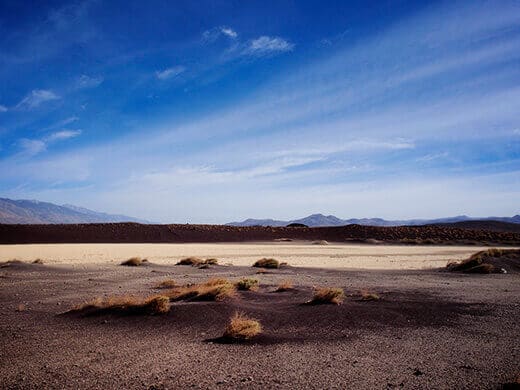
Red Hill is believed to have formed during an eruption about 10,000 to 14,000 years ago. The cinder cone is composed primarily of scoria, a type of volcanic rock resembling pumice. By definition, cinder cones are steep, cone-shaped piles of volcanic debris, such as ash and hardened magma, built up around vents.
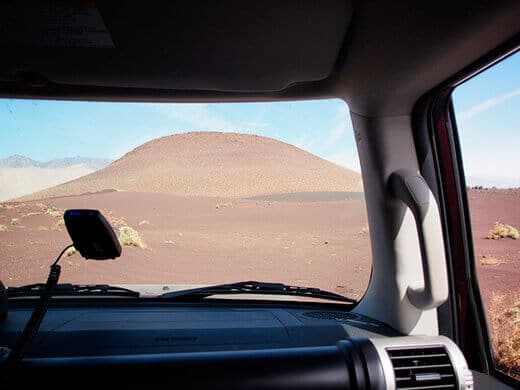
Here the debris spills out around Red Hill in mounds of red, brown, and black volcanic flakes resembling sand — like the layered sand art you find in bottles — but up close they’re quite coarse.
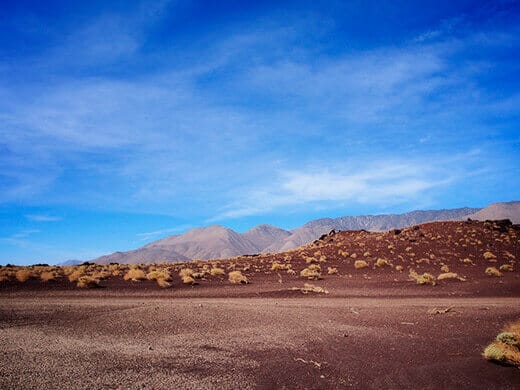
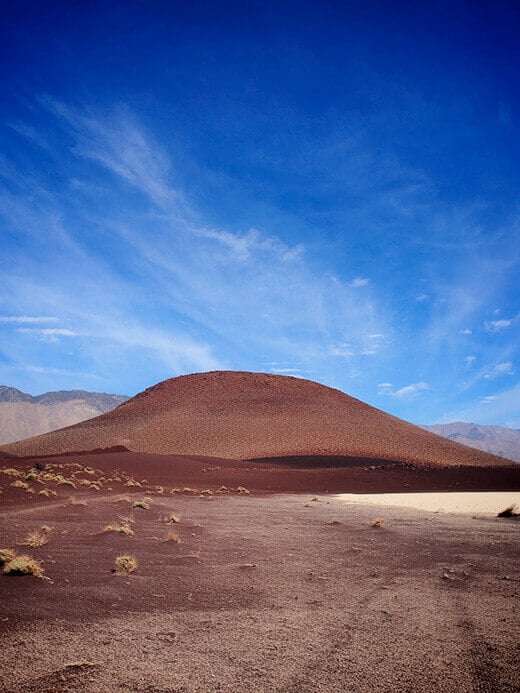
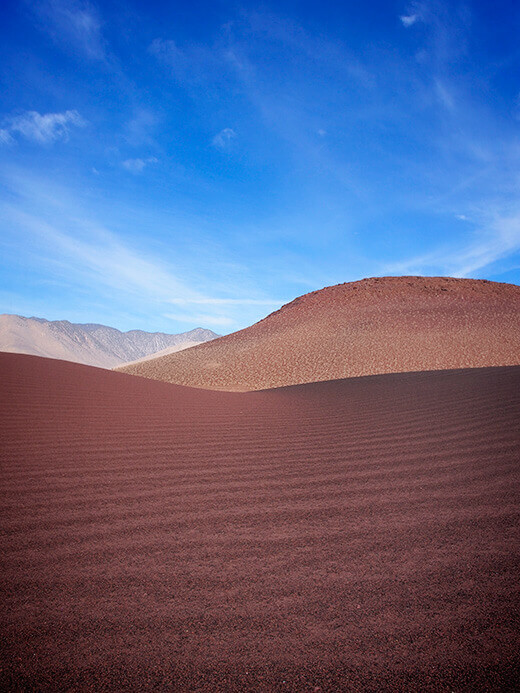
On either side of the cinder cone, remnants of volcanic rocks are scattered across the otherworldly red landscape. If I fell asleep and got whisked away to the Coso Volcanic Field, I might have believed I’d been transported to the surface of Mars. We were only a couple of miles off the highway but you’d never know it looking around the desolate terrain.
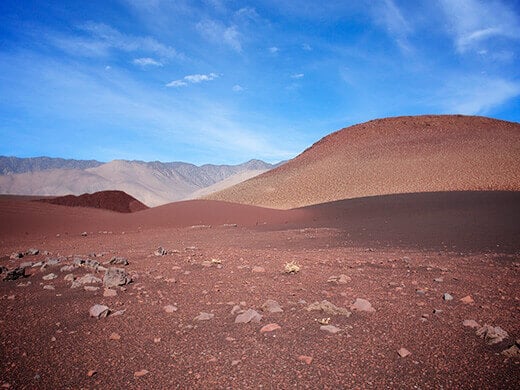

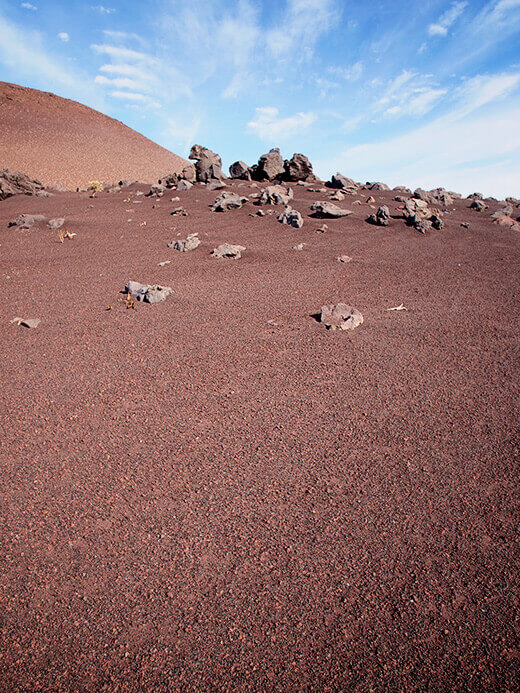
In spite of its eeriness, this part of Inyo County, California, is also one of the most serene and awe inspiring. The next time I come here, I’m climbing to the top of the cinder cone!
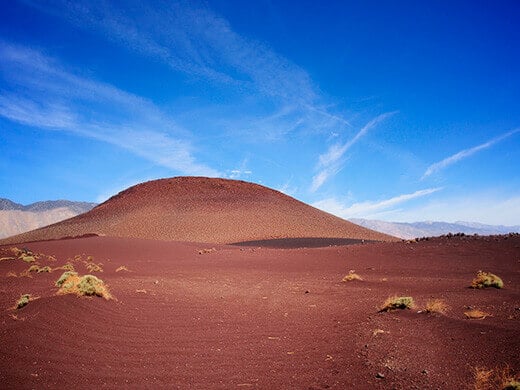
















Hi! Wow how beautiful. Have you been back since? Thinking about taking a trip to see this for myself next week!
I appreciate the photography too and the vistas that nowadays are assumed to be Mars primarily
…
Thank you!
Hi Linda, Thank you for sharing this. I”m planning a trip to Coso Volcanic Field in a few weeks and I’m unfamiliar with the area. Is the road there paved or is it mostly dirt road. If so, will I need a 4×4?
You can make it there in a normal car. 🙂 It’s paved on the highway and packed dirt/gravel on the road to the volcanic field. Enjoy your trip!
Hi Linda. We recently purchased a vacation home in California Hot Springs. I have wondered the source of the hot springs in the area. Is Coso possibly the origin? Thank you.
There’s quite a bit of geothermal activity throughout the Sierra, so I’m not sure the exact origins of those particular hot springs.
Thank you for the perfectly composed photographs. Beautiful, very well done.
Appreciate the compliment!
I have passed by Red Hill many times and for a year just guessed at it. I finally researched it and was blown away, lol. Just kidding. California is full of past volcanic activity and I love being able to live somewhere that has such diversity and interesting geology.
I find this region so fascinating, especially all the thermal springs! (And not just the popular ones that people soak in.)
An otherworldly landscape at the start of the Sierra Nevada: Exploring the Coso Volcanic Field http://t.co/eP3hZFCiPk #california #roadtrip
Road trip through one of the most active volcanic areas in the country. Exploring the Coso Volcanic Field http://t.co/NOQjNcIyGM #california
One of the youngest mountains in California is a red cinder cone volcano. Exploring the Coso Volcanic Field http://t.co/I5jzhsq12N #sierra
One of California’s gems in a highly active geothermal area. Exploring the Coso Volcanic Field http://t.co/ppuRTlrM5i #sierra #roadtrip
The closest volcanic area to Los Angeles is filled with cinder cones and geysers. Exploring the Coso Volcanic Field http://t.co/nfGNc6PK53
Blogged on Garden Betty: Exploring the Coso Volcanic Field http://t.co/3SgOvBwXEN